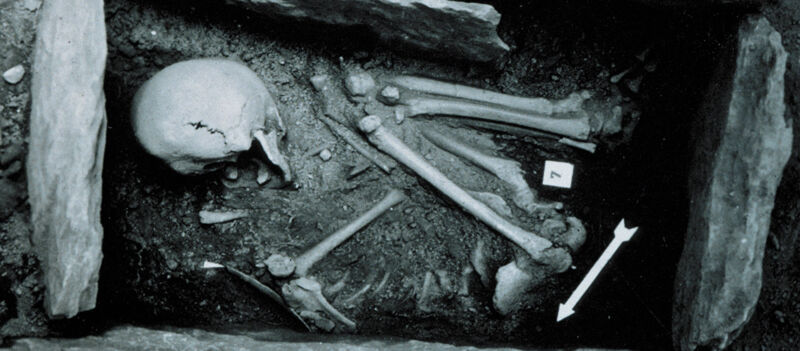
Did ancient people practice equality? Although stereotypes may suggest otherwise, the remains of a Neolithic society show evidence that both men and women, and both locals and foreigners, were all equal in at least one crucial aspect of life: what they ate.
The Neolithic saw the birth of agriculture and animal husbandry some 6,000 years ago. In what is now Valais, Switzerland, people ate the same types and amounts of food, regardless of gender or origin. Researchers led by Déborah Rosselet-Christ of the University of Geneva (UNIGE) discovered this by analyzing isotopes in the bones and teeth of adults buried in what is now called the Barmaz necropolis. Based on the 49 individuals studied, people at the Barmaz site enjoyed a similar diet.
“In contrast to other similar studies of Neolithic burials, it appears that the Barmaz population obtained its protein sources from a similar environment, with the same access to resources for adults, both males and females,” the researchers said in a study recently published in the Journal of Archaeological Science: Reports.
To the bone
To determine whether the diet was consistent among the people buried at Barmaz, Rosselet-Christ and her team had to examine certain isotopes in the bones and others in the teeth. Certain types of bones either regenerate or don’t, which could link the contents of those bones to where someone was born or what they ate in their final years.
In order to determine whether an individual was local or foreign, a number of strontium isotopes in the enamel of their teeth were analyzed. Tooth enamel is formed at a young age and does not renew itself, so isotopes in enamel, which come from the food a person eats, are indicative of the environment their food came from. This can be used to distinguish whether an individual was born somewhere or moved away after the first few years of life. If you know the strontium ratios in a particular location, you can compare them to the ratios in tooth enamel and determine whether the owner of the tooth came from that area.
While strontium in tooth enamel can reveal whether someone was born in a particular location at a young age or moved there, several isotopes of carbon, nitrogen and sulfur that also come from food told the research team what and how much people ate in the last years of their lives. Bones such as the humerus (which was the best-preserved bone in most people) are constantly being renewed with new material. This means that the most recently deposited bone tissue was put into place just before death.
For each his own
Near the Rhône Valley in the Swiss Alps lies the Barmaz necropolis, in an area once covered in deciduous forests that have been replaced by villages and farmland. Most of the people of Barmaz are thought to be local residents. Strontium isotopes found in their teeth showed that only a few were absent from the area for the first few years of their lives, when enamel was forming. Whether other individuals moved there later in life, however, has been more difficult to determine.
Analysis of the Barmaz diet showed that the diet was high in animal protein, supplemented with some plant products such as peas and barley. The isotopes analyzed came primarily from young goats and pigs. Based on higher levels of certain carbon and nitrogen isotopes in their bones, the researchers believe that these young animals may not even have been weaned yet, indicating that people in this agricultural society were willing to produce less meat for higher quality meat.
Rosselet-Christ’s key finding was that the same median fractions of certain carbon, nitrogen, and sulfur isotopes were found in the bones of both men and women. Whether these people were local or foreign did not matter either: the values of these isotopes in those with different strontium isotope content in their tooth enamel were also the same. It seems that all adults ate equal amounts of the same food, which was not always the case in Neolithic societies.
“The individuals buried in Barmaz, both men and women, appear to have lived with equal opportunities, which paints a picture of a society with egalitarian reflections,” the research team said in the same study.
Other things in this society were also similar. The dead were buried in the same way, with largely the same materials, regardless of gender or whether they were locals or foreigners. While a society this egalitarian is not often associated with Neolithic people, it does show that some of our ancestors believed that no one should be left out. Perhaps they were more like us than we think.
Journal of Archaeological Sciences: Reports, 2004. DOI: 10.1016/j.jasrep.2024.104585
